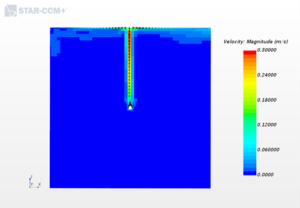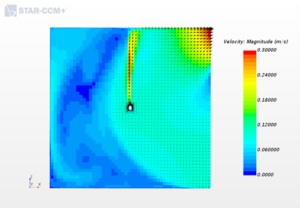With forced convection and the height difference that we are looking at, the effect of this field function on the velocities tends to be small. However, since we only have the free convection, we’ll be looking at small velocities anyhow, so these will have a significant impact.
Without the corrected field function, the pressure difference over the height of the domain will cause velocities on the boundary of the domain to dominate the simulation, as displayed by an example from the Siemens websites, showing the flow without pressure function and with the pressure function.
With the pressure field and velocity in place, the simulation can be started with Simcenter STAR-CCM+, resulting in a flame that is unstably burning in a room.
We hope you enjoy the animation as much as we enjoyed making it.





